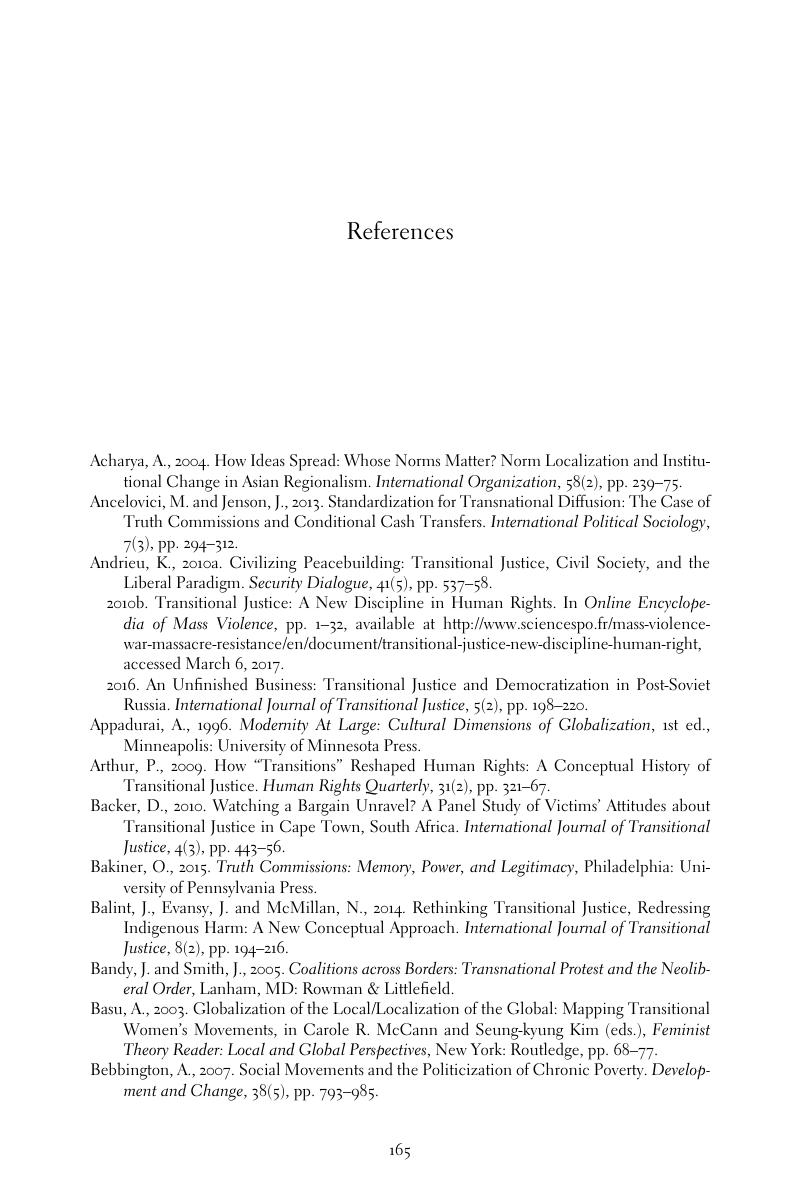Book contents
- Searching for Truth in the Transitional Justice Movement
- Searching for Truth in the Transitional Justice Movement
- Copyright page
- Dedication
- Contents
- Acknowledgments
- 1 Searching for Truth
- 2 Building a Transnational Movement
- 3 Disruption
- 4 Transformation
- 5 Decoupled
- 6 The Power of Legal Ideas
- References
- Index
- References
References
Published online by Cambridge University Press: 30 August 2017
- Searching for Truth in the Transitional Justice Movement
- Searching for Truth in the Transitional Justice Movement
- Copyright page
- Dedication
- Contents
- Acknowledgments
- 1 Searching for Truth
- 2 Building a Transnational Movement
- 3 Disruption
- 4 Transformation
- 5 Decoupled
- 6 The Power of Legal Ideas
- References
- Index
- References
Summary

Information
- Type
- Chapter
- Information
- Searching for Truth in the Transitional Justice Movement , pp. 165 - 176Publisher: Cambridge University PressPrint publication year: 2017
